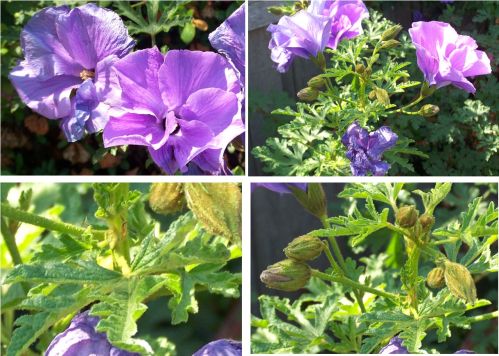This Alyogyne huegelii plant is a newly addition to our garden. During the long drought last year some of our plants suffered and were dying. So we had replaced them with native plants that are more dry tolerance. I find that this species of Australian Native Hibiscus is thriving nicely.
Alyogyne huegelii which is also commonly known as Lilac hibiscus is found naturally growing in Southwest of Western Australia. It is one of many other species of Australian native hibiscus. Although it is the mauve colour that is commonly cultivated and sold for garden plant, there is another one with cream colour.
The plant can grow up to 4 meters high and it needs to be pruned regularly to keep it in a reasonably compact shape. The bright green leaves are divided into five sections with irregular margin. They are strongly veined and covered by fine hair (pubescent). Both the leaf and flower stems are also pubescent.

The single flowers have five soft and thin overlapping luminous petals, they almost look like crepe paper in appearance. The yellow center of the flowers is a pretty contrast to mauve petals. The flowercan grow up to 7 cm long.
Hibiscus A huegelii will grow best in sandy soil but it also grow well in any ordinary garden soil. It tolerates extremely dry condition and frost.
The name Huegelii was derived from the name of a German botanist and naturalist Baron Charles von Huegel (1795 – 1870) who was an avid collector of Australian native plants.
Like any other Australian native hibiscus, it is sometimes hard to find this plant in garden nurseries. Maybe you have to go to a special nursery for Australian native plants. However, once you find it and have it grown in your garden, it will be one of your very versatile plants with pretty purple flowers.
Happy Gardening!!

















